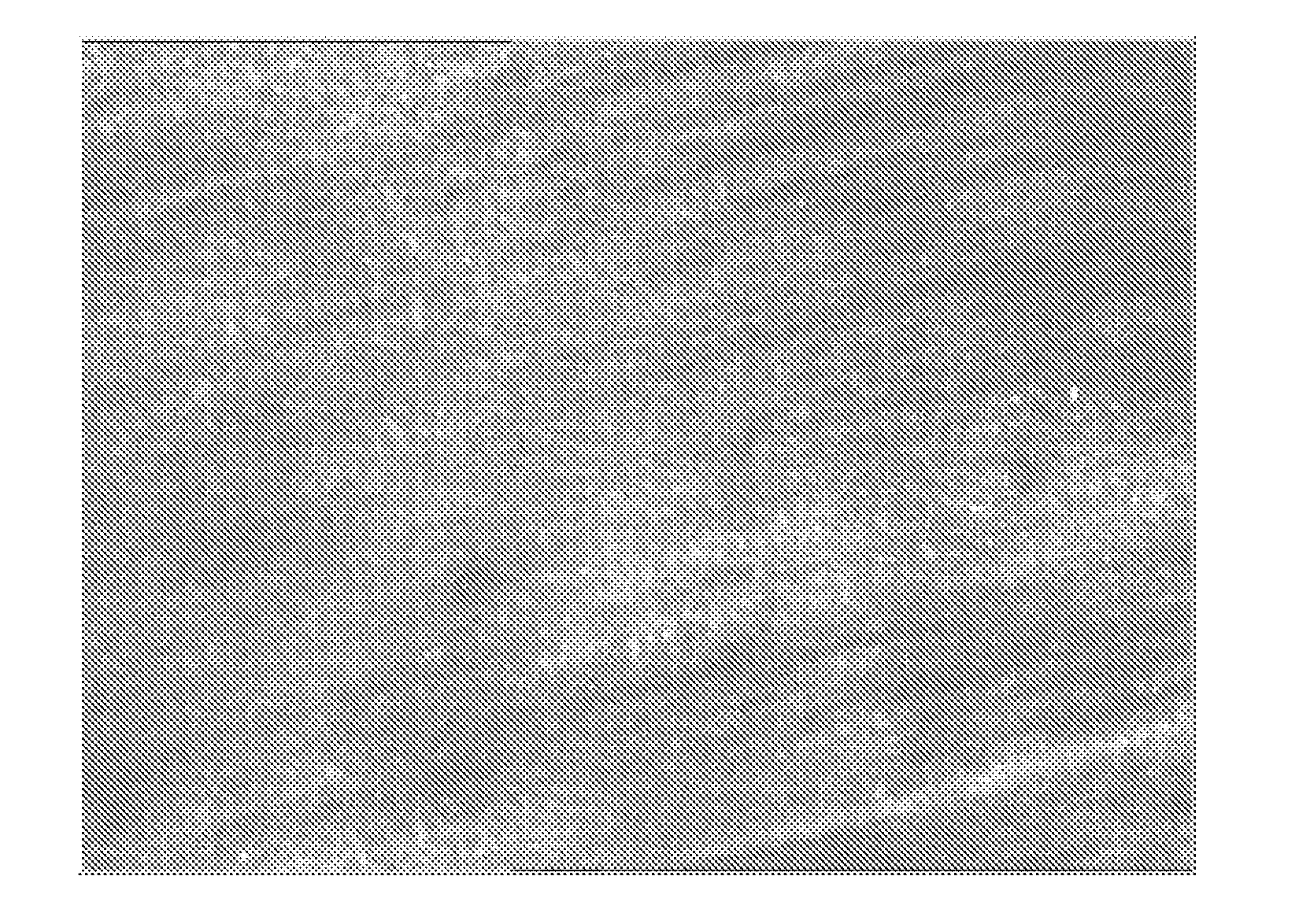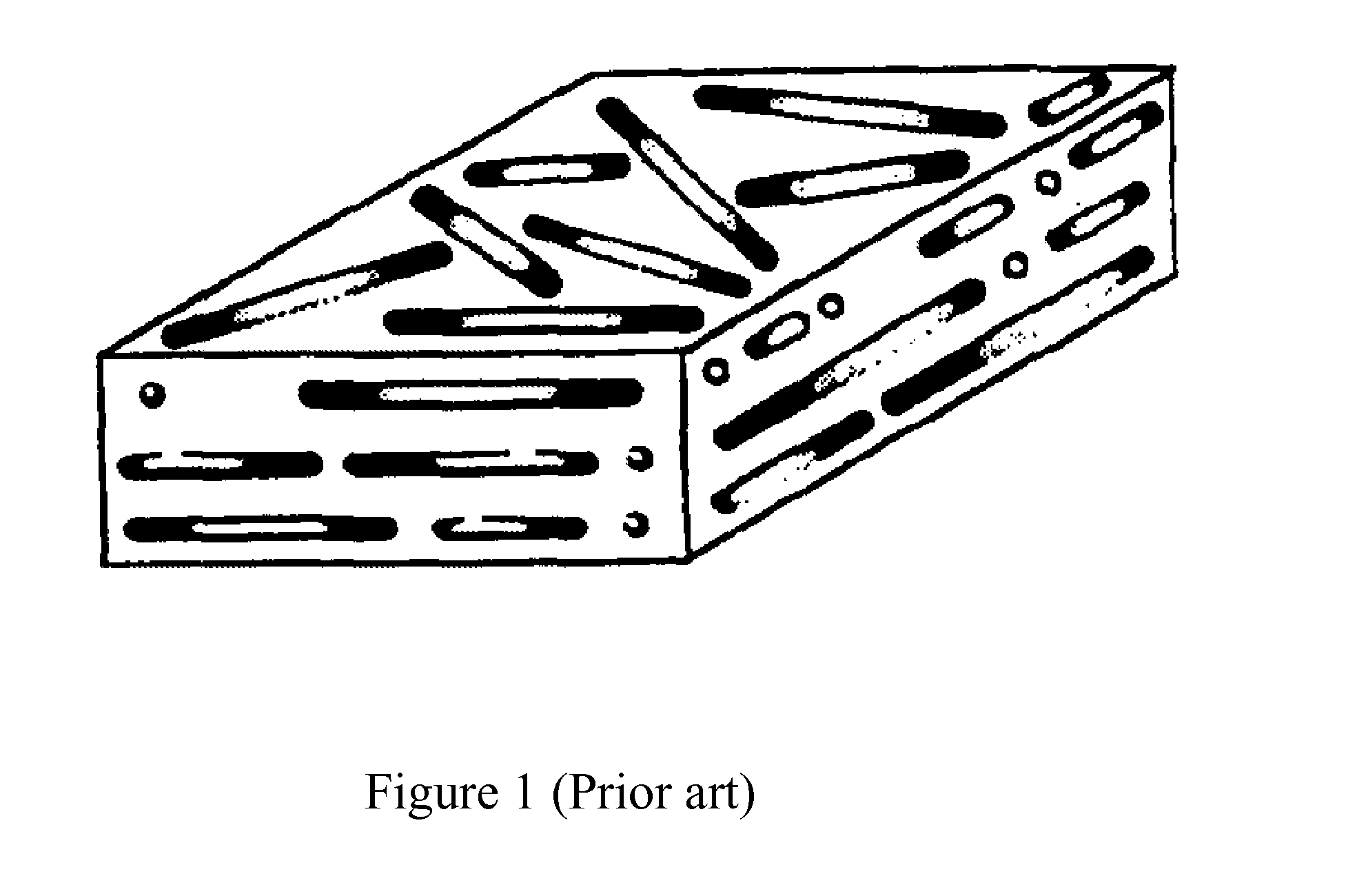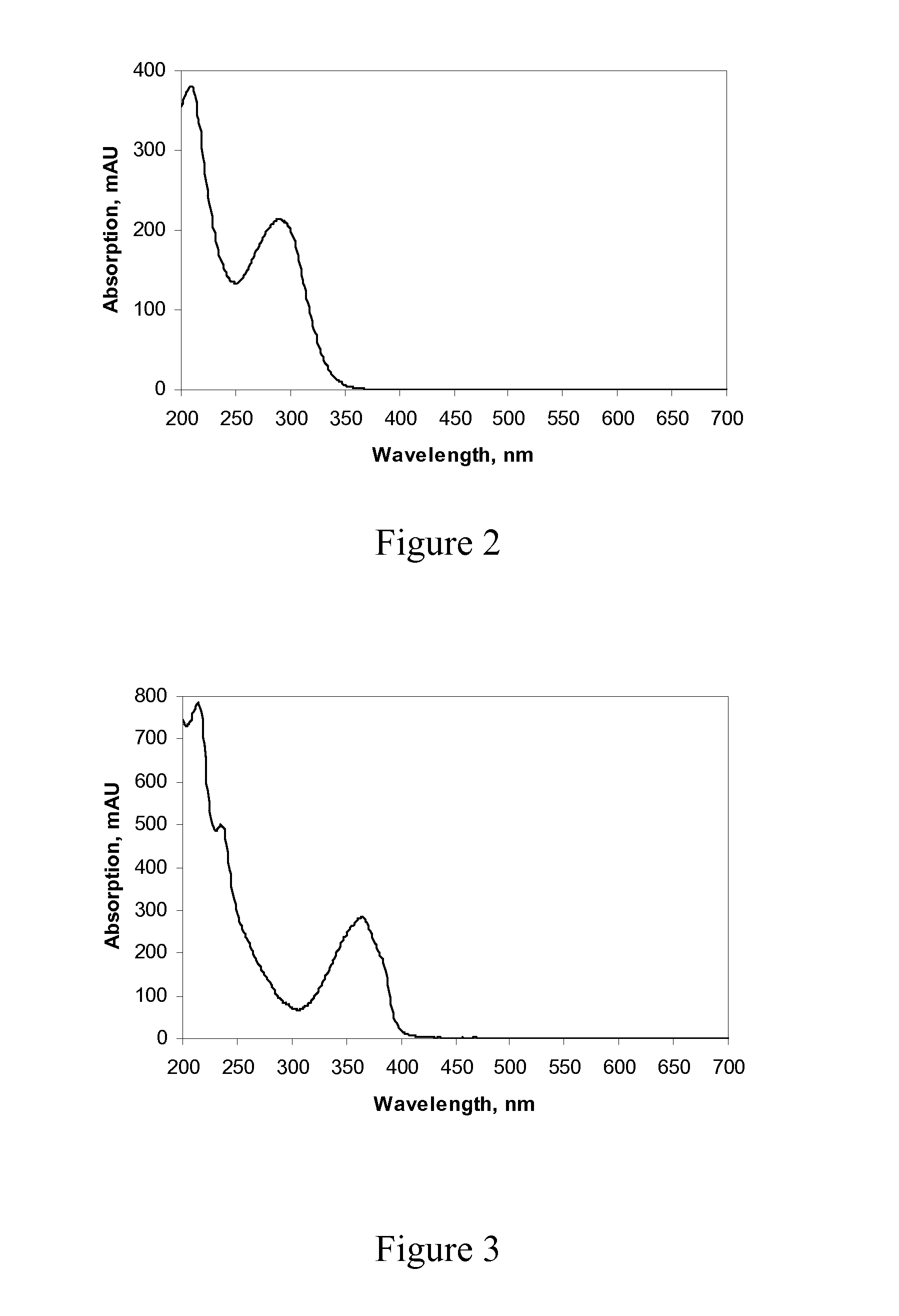Organic Polymer Compound, Optical Film and Method of Production Thereof
a polymer compound and organic polymer technology, applied in the field of organic chemistry, can solve the problems of oblique viewing angle contrast ratio decline, polarizers becoming uncrossed, low contrast ratio at wide viewing angle along the bisector of crossed polarizers,
- Summary
- Abstract
- Description
- Claims
- Application Information
AI Technical Summary
Problems solved by technology
Method used
Image
Examples
example 1
[0054]This example describes synthesis of poly(2,2′-disulfo-4,4′-benzidine isophthalamide) cesium salt (structure 2 in Table 2).
[0055]1.377 g (0.004 mol) of 4,4′-diaminobiphenyl-2,2′-disulfonic acid was mixed with 1.2 g (0.008 mol) of Cesium hydroxide monohydrate and 40 ml of water and stirred with dispersing stirrer till dissolving. 0.672 g (0.008 mol) of sodium bicarbonate was added to the solution and stirred. While stirring the obtained solution at high speed (2500 rpm) a solution of 0.812 g (0.004 mol) of isophthaloyl dichloride (IPC) in dried toluene (15 mL) was gradually added within 5 minutes. The stirring was continued for 5 more minutes, and viscous white emulsion was formed. Then the emulsion was diluted with 40 ml of water, and the stirring speed was reduced to 100 rpm. After the reaction mass has been homogenized the polymer was precipitated via adding 250 ml of acetone. Fibrous sediment was filtered and dried.
[0056]Weight average molar mass of the polymer samples was d...
example 2
[0057]Example 2 describes synthesis of 2,2′-disulfo-4,4′-benzidine terephthalamide-isophthalamide copolymer cesium salt (copolymer of structures 1 and 2 in Table 2).
[0058]The same method of synthesis can be used for preparation of the copolymers of different molar ratio.
[0059]4.098 g (0.012 mol) of 4,4′-diaminobiphenyl-2,2′-disulfonic acid was mixed with 4.02 g (0.024 mol) of cesium hydroxide monohydrate in water (150 ml) in a 1 L beaker and stirred until the solid was completely dissolved. 3.91 g (0.012 mol) of sodium carbonate was added to the solution and stirred at room temperature until dissolved. Then toluene (25 ml) was added. Upon stirring the obtained solution at 7000 rpm, a solution of 2.41 g (0.012 mol) of terephthaloyl chloride (TPC) and 2.41 g (0.012 mol) of isophthaloyl chloride (IPC) in toluene (25 ml) were added. The resulting mixture thickened in about 3 minutes. The stirrer was stopped, 150 ml of ethanol was added, and the thickened mixture was crushed with the sti...
example 3
[0060]Example 3 describes synthesis of poly(2,2′disulpho-4,4′ benzidine 1,4,5,8-naphtalen tetracarboxylic acid diimid) triethylammonium salt (structure 6 in Table 2).
[0061]4.023 g (0.015 mol) of 1,4,5,8-naphtaline tetracarbonic acid dianhydride and 5.165 g (0.015 mol) of 2,2′-disulfobenzidine and 0.6 g of benzoic acid (catalyst) are charged into a three-neck flask equipped with an agitator and a capillary tube for argon purging. With argon flow turned on 40 ml of molten phenol is added to the flask. Then the flask is placed in a water bath at 80° C., and the content is agitated until homogeneous mixture is obtained. 4.6 ml of triethylamine is added to the mixture, and agitation is kept on for 1 hour to yield solution. Then temperature is raised successively to 100, 120, and 150° C. At 100 and 120 centigrade agitation is held for 1 hour at each temperature. During this procedure the solution keeps on getting thicker. Time of agitation at 150° C. is 4 to 6 hrs.
[0062]The thickened solu...
PUM
| Property | Measurement | Unit |
|---|---|---|
| size | aaaaa | aaaaa |
| angle | aaaaa | aaaaa |
| temperature | aaaaa | aaaaa |
Abstract
Description
Claims
Application Information
 Login to View More
Login to View More - R&D
- Intellectual Property
- Life Sciences
- Materials
- Tech Scout
- Unparalleled Data Quality
- Higher Quality Content
- 60% Fewer Hallucinations
Browse by: Latest US Patents, China's latest patents, Technical Efficacy Thesaurus, Application Domain, Technology Topic, Popular Technical Reports.
© 2025 PatSnap. All rights reserved.Legal|Privacy policy|Modern Slavery Act Transparency Statement|Sitemap|About US| Contact US: help@patsnap.com



